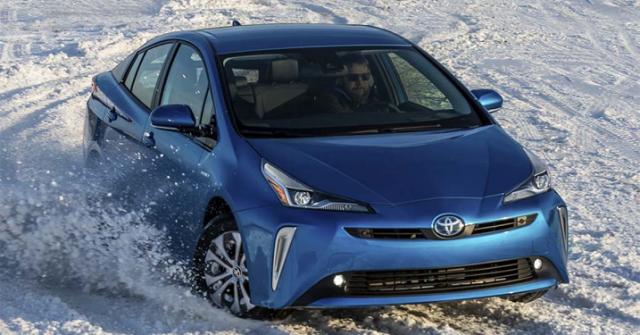In an automotive industry that offers American buyers hundreds of different options, few models have the immediate name recognition of the compact Toyota (7203.T-JP) Prius.
When it debuted in Japan in 1997, it became the world’s first mass-market hybrid electric vehicle and demand exploded when it reached the U.S. three years later.
The Prius delivered around 50 miles a gallon and had far more interior space than the typical fuel-saving minicar — all at an affordable price. That made it the best-selling car of any form in California, and the best-selling hybrid vehicle worldwide earlier this decade.
But, as an updated 2019 version of the Prius gets ready to roll into U.S. showrooms, Toyota is facing a difficult situation. Sales of the Prius have been tumbling for several years and were down 23.2 percent for the first 11 months of 2018. The new version delivers updates Toyota hopes will revive the hybrid’s momentum, including a new all-wheel-drive system that could improve its appeal in the Snowbelt. But whether that will be enough is uncertain and company officials admit they’re struggling to figure out what to do next.
First look
“For the next Prius we have to think about how to … separate [it] from the rest of the Toyota line-up,” Deputy Chief Engineer Koichi Kaneko said in an interview in Kohler, Wisconsin where the automaker was giving journalists a first chance to drive the 2019 model last week.
There are a variety of reasons why Toyota sold just 3,180 of its Prius hatchbacks in November. Sales of the entire Prius “family,” including a plug-in hybrid version, are running barely a quarter of its peak.
The sharp downturn in fuel prices has scuttled sales of all mileage-minded vehicles. But, as Kaneko alluded to, Toyota has also diluted the appeal of the Prius by now offering hybrid powertrain options on a variety of its more conventional models, such as the Corolla sedan and RAV4 crossover-utility vehicle.
The RAV4 is now Toyota’s best-selling American model, last year nudging past the familiar Camry sedan. And some observers believe the hybrid version of the cross-over utility vehicle could out-sell Prius in 2019. As a result, many are questioning whether Toyota even needs the Prius anymore.
“Toyota can say the Prius did everything they needed,” said Stephanie Brinley, principal automotive analyst for IHS Markit, helping burnish the Japanese automaker’s green credentials and proving there’s a market for gas-electric drivetrain technology.
“But what do they need Prius for” anymore? Brinley quickly added. “It’s difficult to walk away from a nameplate with so much equity, but it may make sense to drop it.”
For now, at least, that’s not something Toyota plans to do. And the 2019 model shows that the automaker is looking for ways to revitalize the hybrid hatchback’s appeal. That includes some modest tweaks to interior and exterior design responding to wide criticism of the fourth-generation model after its 2016 model-year debut.
More technology
There’s also a lot more technology, something that appears to appeal to buyers of a vehicle using a high-tech powertrain. There’s a tablet-sized 11.6-inch touchscreen, lots of USB ports, Apple CarPlay and the Toyota Safety Sense suite of advanced driver assistance systems, such as forward collision warning with automatic emergency braking.
But the biggest addition for 2019 is an electric all-wheel-drive system that markedly improves the Prius hatchback’s grip on slick roads, as Toyota set out to demonstrate during its media preview in frigid Kohler.
The system is a simpler version of the all-wheel-drive technology found on some products, and works only at relatively low speeds, but it helps Toyota maintain Prius’s position as “an affordable hybrid.” A base model starts at just $23,770, and versions with all-wheel-drive start at $26,380.
Still, Toyota officials concede that the 2019 updates aren’t going to be enough to keep Prius a viable player going into a future where, as Brinley points out, virtually all products will use some form of electric drive. General Motors and Volkswagen are planning to eliminate gas and diesel drive technology entirely.
“Toyota has to be ready to respond to these trends” reshaping the automotive market and might even have to consider the possibility of either shifting to a crossover body style or adding a CUV to the broader Prius family that today also includes the small Prius C and bigger Prius V.
“I don’t think Prius can be the same as before,” said Kaneko, looking forward to the gen-5 model that is just now beginning to enter the development process. “Our role is to figure out what we can do with it. We need to find a new direction.”
Though Toyota won’t discuss the timing of that next model, its traditional product cadence would suggest it should reach market by around the 2022 model year. That is, of course, assuming Prius remains part of the brand’s line-up. But considering how much Toyota has invested in the world’s first hybrid, it clearly will be reluctant to give up on Prius without trying out every possible approach to keeping it viable.














